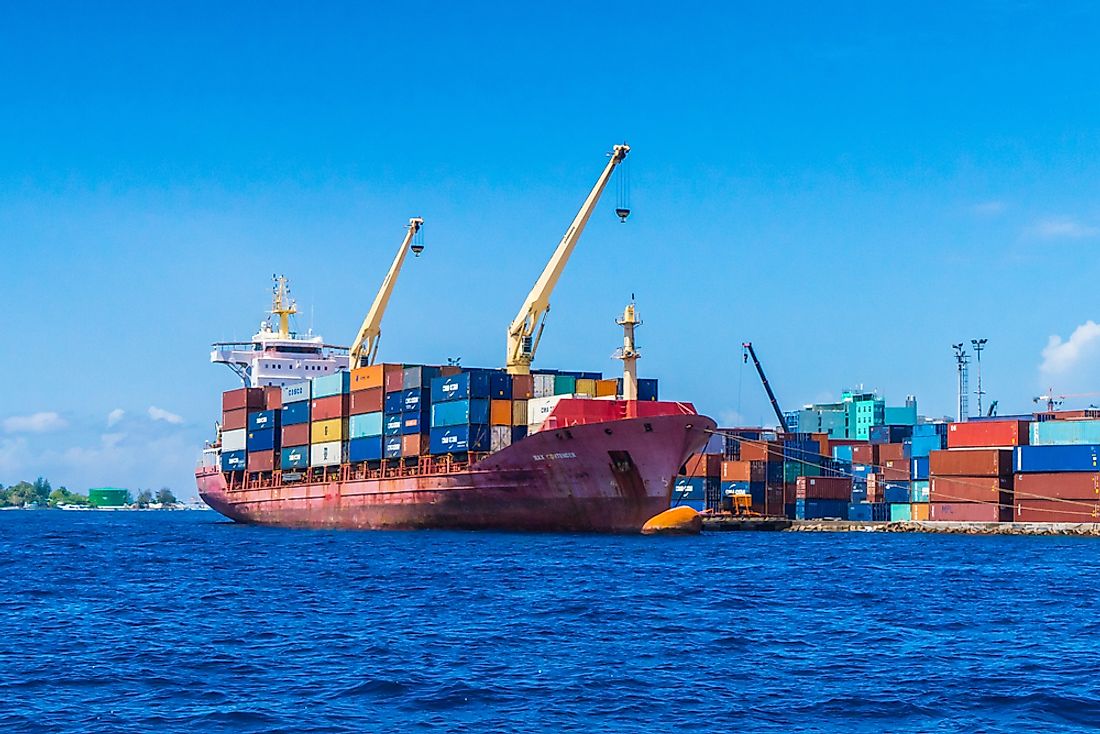What Are The Biggest Industries In the Maldives?

The Maldives is an island country consisting of over 1,190 coral islands grouped in double chains of 26 atolls. These islands spread over an area of approximately 35,000 square miles, making the Maldives one of the most dispersed countries in the world. Only 198 of the islands are inhabitable. It is also the lowest country in the world, with an average elevation of less than 2.5 meters above sea level. The Maldives, in the past, faced several challenges that affected its growth and development. These challenges included political instability and environmental challenges posed by climate change. The rising sea level has forced the government to declare the Maldives a carbon-neutral country.
According to the World Bank, Maldives has a middle-income economy. Although the Maldives was one of the poorest countries in the world in the 1970s, the government initiated some economic reforms in the 1980s such as lifting import quotas and granting investment opportunities to private sectors. During this period, several industries emerged and the existing ones improved their capacity and productivity.
Tourism
Before the 1970s, Maldives was a relatively unknown tourist destination. Of the over 1,190 coral islands, only about 198 are inhabited while the others are entirely used for economic purposes of which agriculture and tourism are the dominant economic activities. Tourism is the largest industry in the Maldives as it is the major source of foreign earnings and source of employment in the country. The industry accounts for about 39% of the GDP and over 60% of the total foreign earning. Over 90% of the government taxes are drawn from tourism-related taxes and import duties. The first resort was launched in the Maldives in 1972 with the first tourists arriving in the country the same year. From two just two resorts in 1972, the currency has 132 resorts spread across several atolls. From just over 100 visitors in 1972, about 1.5 million tourists visited the country in 2016. Most of the tourists come from China, Germany, and the United Kingdom.
Agriculture
Agriculture is an important sector of the economy, especially for the rural population of the Maldives and also plays an important role in food and nutrition. Agriculture is a primary source of livelihood for about 7,000 farmers and their families. Despite the recent decline in the role of agriculture in the Maldives, the sector accounts for 6% of the total GDP. Agricultural production has been in the increase in recent past and the sector revenue has also increased. Although the coral island lacks adequate arable land, agricultural activities are more important parts of livelihood in over two-thirds of the inhabited islands. In most of these islands, field crops such as watermelons, sweet potatoes, cassavas, chilies, eggplant, cabbage, and papaya are grown all year round.
Fishing
Given the fact that almost the entire territory of Maldives is in the ocean, the fishing industry is a key component of the economy, providing both food and income to most families. In fact, it is the second-largest industry in the country and the nation’s “lifeblood” according to President Gayoom. Apart from being an integral part of the economy, fishing is also a recreational activity, attracting hundreds of tourists every year. There are numerous fishing resorts in the Maldives that cater to such recreational activities. The Maldives has abundant fish species including dolphin fish, tuna, barracuda, grouper, and rainbow runner. About 90% of the catch is tuna.
Manufacturing
Maldives has a well-established manufacturing industry that accounts for about 7% of the GDP. The traditional industries consist of handicraft, boat building, and garment production while the modern manufacturing industry is confined to tuna canneries, food production, and PVC pipe production. The scarcity of natural resources in the Maldives has slowed the growth of the manufacturing industry, especially the manufacturing of essentials and consumable goods. Thus, most of these essentially are imported. However, with the thriving fishing and agriculture industries, the manufacturing industry is expected to grow and its contribution to the economy increase.











